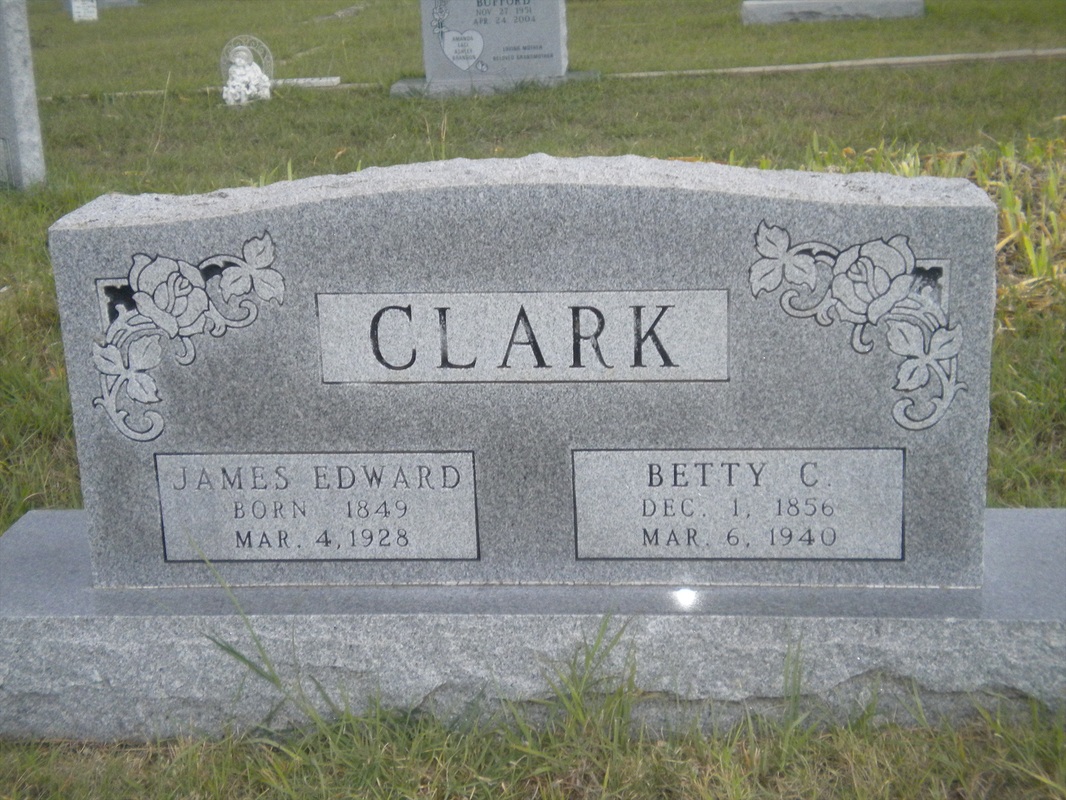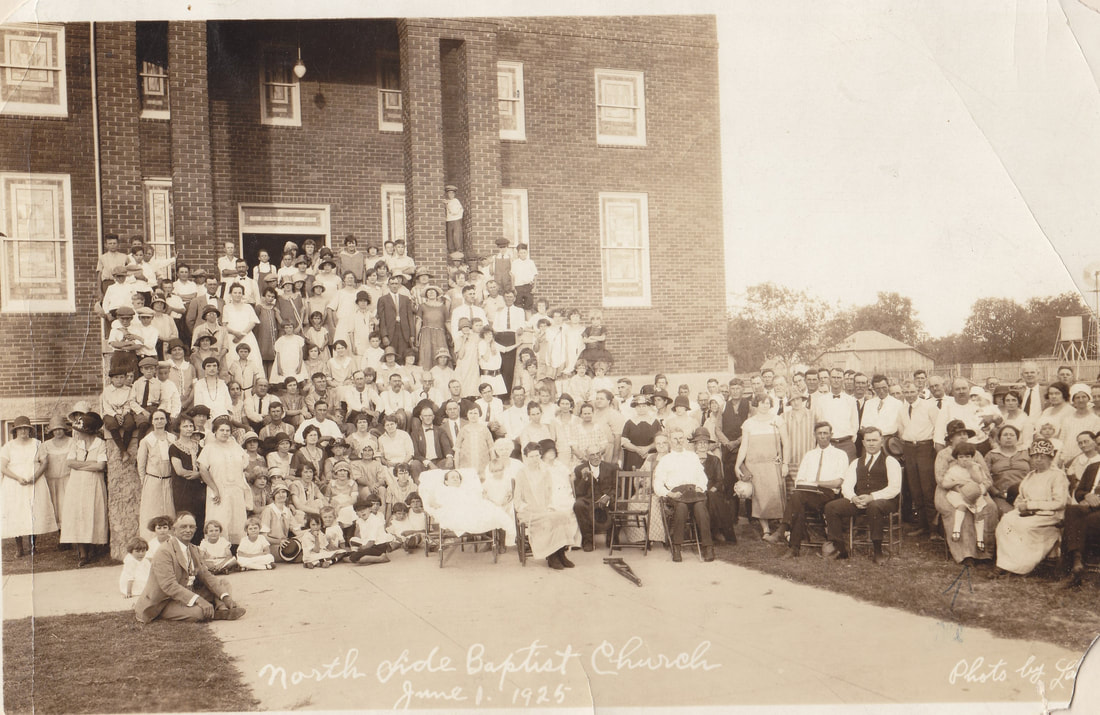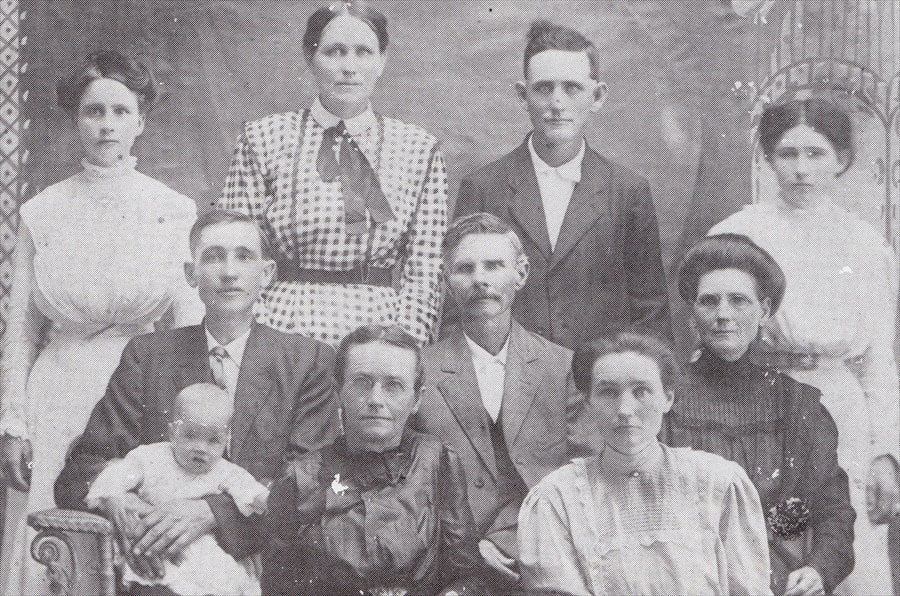JAMES EDWARD "JIM" CLARK
Birth: 1849
Death: 4 Mar 1928
(age approximately 79 years)
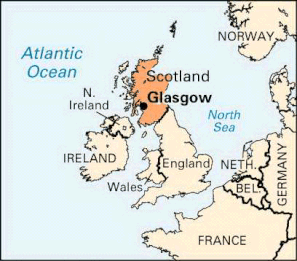
From Scotland to Texas
James Edward “Jim” Clark’s grandfather, James C. Clark, was born in Glasgow, Scotland in 1782. James came to the United States in 1807 when he was about 25 years old. It is not known where or when he married Dicey Herrin. Little is known about Dicey except that she was born in North Carolina in 1786. She was four years younger than James.
James and Dicey’s movements west can be traced through census records and birth records of their children. They had their first child, Robert Alexander “Elic” Clark (Jim’s father) in Jefferson County, Alabama in 1818 when James was 36 years old. Their other children were also born in the same area of Alabama. James C. Clark Jr was born in 1825. Mary was born in 1828. And Washington was born in 1832. Therefore, we know they spent at least 14 years, probably more, in Alabama.
By the mid 1840’s both of James and Dicey’s two eldest sons were married. James C. Clark Jr. married Margaret Bragg. And Robert Alexander Clark married Mary Ann Edwards. Margaret Bragg was born in 1826 in Alabama and Mary Ann was born in 1823 in North Carolina. By looking at United States census records it appears that the elder James C. Clark traveled with his family as a group most, if not all, of his life. If that holds true then that means that James and his family started moving west and were in Mississippi by Nov. 22, 1844 when his first grandchild, Sarah Jane Clark, was born. She was the first child of James C. Clark Jr. and Margaret Bragg.
However, it wasn’t long before the Clark family moved further west. Birth records of James and Dicey’s grandchildren indicate that the family moved to Texas sometime between 1845 (the birth of grandson William Hollie Clark in Mississippi) and 1848 (the birth of granddaughter Mary Ellen Clark in Texas).
James Edward “Jim” Clark’s grandfather, James C. Clark, was born in Glasgow, Scotland in 1782. James came to the United States in 1807 when he was about 25 years old. It is not known where or when he married Dicey Herrin. Little is known about Dicey except that she was born in North Carolina in 1786. She was four years younger than James.
James and Dicey’s movements west can be traced through census records and birth records of their children. They had their first child, Robert Alexander “Elic” Clark (Jim’s father) in Jefferson County, Alabama in 1818 when James was 36 years old. Their other children were also born in the same area of Alabama. James C. Clark Jr was born in 1825. Mary was born in 1828. And Washington was born in 1832. Therefore, we know they spent at least 14 years, probably more, in Alabama.
By the mid 1840’s both of James and Dicey’s two eldest sons were married. James C. Clark Jr. married Margaret Bragg. And Robert Alexander Clark married Mary Ann Edwards. Margaret Bragg was born in 1826 in Alabama and Mary Ann was born in 1823 in North Carolina. By looking at United States census records it appears that the elder James C. Clark traveled with his family as a group most, if not all, of his life. If that holds true then that means that James and his family started moving west and were in Mississippi by Nov. 22, 1844 when his first grandchild, Sarah Jane Clark, was born. She was the first child of James C. Clark Jr. and Margaret Bragg.
However, it wasn’t long before the Clark family moved further west. Birth records of James and Dicey’s grandchildren indicate that the family moved to Texas sometime between 1845 (the birth of grandson William Hollie Clark in Mississippi) and 1848 (the birth of granddaughter Mary Ellen Clark in Texas).
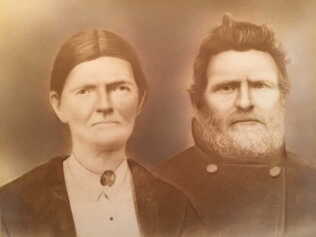 Margaret Bragg & James C. Clark Jr.
Margaret Bragg & James C. Clark Jr.
James C. Clark Jr. and Margaret Bragg had eight children in all: Sarah Jane, Nancy Adeline, Mary Ellen, Amanda, Dicey, Martha Emma, Margaret Virginia, and JT “Bud” Clark. While Robert Alexander “Elic” Clark had five children with his first wife, Mary Ann Edwards: William Hollie, James Edward, Malinda, Mary, and Emily “Emma”.
Texas joined the union on December 29, 1845 and had land to offer. Many people started migrating to Texas. Though it is not known for sure, it is likely that the Clark’s came to Texas as part of this westward migration. The possibility of land ownership for farming and raising cattle could be associated with freedom and was very tempting to these early Texas pioneers. They saw it as an opportunity for a better life.
Texas joined the union on December 29, 1845 and had land to offer. Many people started migrating to Texas. Though it is not known for sure, it is likely that the Clark’s came to Texas as part of this westward migration. The possibility of land ownership for farming and raising cattle could be associated with freedom and was very tempting to these early Texas pioneers. They saw it as an opportunity for a better life.
Robert Alexander “Elic” Clark and Mary Ann Edwards’ second child, James Edward “Jim” Clark, was born in Wood County, Texas in 1849. A year later the 1850 United States census records the family in Van Zandt County. At this time the elder James C. Clark is living with his wife, Dicey, and two youngest children, Mary and Washington. He is a school teacher and may have been one of the first school teachers in the early days of Van Zandt County. Oral family history states that Elic was at one time a student of his father. But in order to not show favoritism James actually was quite hard on his son, almost to the point of being cruel. If this is true then it means James must have also been a school teacher during the family’s time living in Alabama, when Elic would have been a boy.
As mentioned, the Clark family, including James Jr. and Elic, can be found in Van Zandt County, Texas in 1850. James Jr. was a farmer living with his wife, Margaret, and 3 young children. And Robert Alexander “Elic” was a farmer living with his wife, Mary Ann, and two young children, Hollie and Jim.
As mentioned, the Clark family, including James Jr. and Elic, can be found in Van Zandt County, Texas in 1850. James Jr. was a farmer living with his wife, Margaret, and 3 young children. And Robert Alexander “Elic” was a farmer living with his wife, Mary Ann, and two young children, Hollie and Jim.
The family moved even further west some time before 1860. In 1860 the Clark family was living in Buchanan County (later changed its name to “Stephens” County). James Jr. was living with his wife and children. But the 78 year old Scotland born, James C. Clark, was living with his son Robert Alexander “Elic” and his family. Dicey is not found on the 1860 census. Therefore, it is assumed that James C. Clark’s wife Dicey died in Texas sometime between 1850 and 1860. Her burial location is not known.
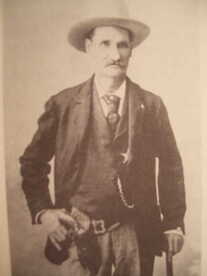 John Henry Selman
John Henry Selman
1860 was also the last time that Robert Alexander’s wife, Mary Ann (Edwards) appeared in the census. However, sometime between 1860 and 1864 Robert Alexander “Elic” married his second wife, Mary Ann Selman. Ann Selman was the daughter of Jeremiah Matthew Selman and Permelia Norwood. She was born in Arkansas in 1844. Her brother, John Henry Selman, was the notorious lawman/gunfighter known for killing outlaw John Wesley Hardin in 1895. Robert Alexander and Ann had seven children: John, William Teet, Thomas C., Elizabeth “Lizzie, Robert Alexander Jr., George, and Jesse. Thus, they were half siblings to Elic’s previous five children including Hol and Jim.
Sometime before his death in 1928, James Edward “Jim” Clark was personally interviewed by Austin attorney, Joseph Carroll McConnell for his book “The West Texas Frontier”. McConnell wrote: “About 1862, Hol and James, sons of R. A. Clark, who lived on the Clear Fork of the Brazos in Stephens County, across the river from Miller’s Valley, started one night to stake a horse about one quarter of a mile north of their residence. When they had gone about three hundred yards, James Clark saw the form of an Indian to the west, standing in the dim skylight forty steps away. Timothy Broomfield was expected over to the Clark home that night to go to a wild turkey roost a short distance up Huffstuttler’s Creek. So the Clark boys thought, perhaps, the horseman was he.
Consequently, they called three times, and when no answer was returned, Hol fired, killed the horse the Indian was riding, and the report of the gun so badly scared James’ horse that he ran fifty or sixty yards before he could be controlled. Hol hurried on toward the house and when James was able to turn his horse, he too started toward the Clark ranch. When James crossed where the savage’s horse fell, he saw the Indian leaning against a tree. This Indian was now screaming almost every breath. No doubt, he was calling for aid from his comrades, for other savages soon came with a horse and carried him away.
Only Hol Clark had a gun, and although he was only about 15-16 years of age, this frontier boy exemplified a steady nerve. James was still younger at only about 12 years old.
Later on during the same night, Jasper DeGraffenreid, John Selman, Elic Clark, and Hol started back to the wounded Indian. But the citizens soon discovered other savages were now around him, so they turned back toward the Clark ranch for fear of being ambushed in the dark. “
Sometime before his death in 1928, James Edward “Jim” Clark was personally interviewed by Austin attorney, Joseph Carroll McConnell for his book “The West Texas Frontier”. McConnell wrote: “About 1862, Hol and James, sons of R. A. Clark, who lived on the Clear Fork of the Brazos in Stephens County, across the river from Miller’s Valley, started one night to stake a horse about one quarter of a mile north of their residence. When they had gone about three hundred yards, James Clark saw the form of an Indian to the west, standing in the dim skylight forty steps away. Timothy Broomfield was expected over to the Clark home that night to go to a wild turkey roost a short distance up Huffstuttler’s Creek. So the Clark boys thought, perhaps, the horseman was he.
Consequently, they called three times, and when no answer was returned, Hol fired, killed the horse the Indian was riding, and the report of the gun so badly scared James’ horse that he ran fifty or sixty yards before he could be controlled. Hol hurried on toward the house and when James was able to turn his horse, he too started toward the Clark ranch. When James crossed where the savage’s horse fell, he saw the Indian leaning against a tree. This Indian was now screaming almost every breath. No doubt, he was calling for aid from his comrades, for other savages soon came with a horse and carried him away.
Only Hol Clark had a gun, and although he was only about 15-16 years of age, this frontier boy exemplified a steady nerve. James was still younger at only about 12 years old.
Later on during the same night, Jasper DeGraffenreid, John Selman, Elic Clark, and Hol started back to the wounded Indian. But the citizens soon discovered other savages were now around him, so they turned back toward the Clark ranch for fear of being ambushed in the dark. “
Buchanan (Stephens) County was on the extreme edge of the Texas frontier. As more settlers migrated into the area the U.S. Army had established a line of forts in the 1850’s to help protect these early settlers from the Indians. However, once the Civil War between the states broke out in 1861 these forts were largely abandoned so that the U.S. troops could go fight in the war.
Thus, settlers were left to defend themselves against the Indians. And they weren’t always successful. On October 13, 1864 a band of 600 plus Comanches and Kiowas raided from house to house near Elm Creek in Young County. They slaughtered, killed, looted, scalped, burned buildings, drove off cattle, stole horses, etc. In the end 12 settlers were killed, numerous homes destroyed and 6 people were taken captive. It was one of the worst Indians attacks in Texas history.
It was the Elm Creek Raid that caused many settlers to “fort up”. Citizens would cluster together and build stockade or picket fences around simple built homes. One such fort was Fort Davis in far northwest Stephens (previously Buchanan) County.
Thus, settlers were left to defend themselves against the Indians. And they weren’t always successful. On October 13, 1864 a band of 600 plus Comanches and Kiowas raided from house to house near Elm Creek in Young County. They slaughtered, killed, looted, scalped, burned buildings, drove off cattle, stole horses, etc. In the end 12 settlers were killed, numerous homes destroyed and 6 people were taken captive. It was one of the worst Indians attacks in Texas history.
It was the Elm Creek Raid that caused many settlers to “fort up”. Citizens would cluster together and build stockade or picket fences around simple built homes. One such fort was Fort Davis in far northwest Stephens (previously Buchanan) County.
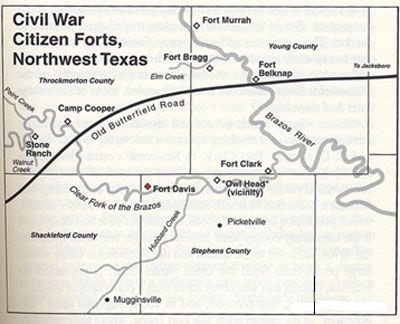 Fort Davis, Stephens County, Texas
Fort Davis, Stephens County, Texas
Although we don’t have the luxury of having first-hand accounts or diaries from the Clark family, we do have the diary of one of their fellow settlers, 24 year old Samuel P. Newcomb and his young wife Susan (Reynolds) Newcomb. Sam was a schoolteacher in Fort Davis and he kept a diary of the daily life at Fort Davis between January 1, 1865 and March 10, 1866. Susan kept one intermittently from 1865 – 1873. It is because of these diaries we know that the Clark family was in and around Fort Davis at this time. “R. A. Clark” and the Clark family are mentioned several times throughout Sam and Susan’s diaries. Sometimes Sam mentions the Clarks as living at nearby Stockton Ranch and other times he gives the impression that the Clarks are living within Fort Davis.
Before Fort Davis was established, Samuel Newcomb also wrote about a 2 month long trip from Stephens County to the San Saba River. On February 1, 1864 Sam and six fellow settlers, including 18 year old Hol Clark set off south to find a place to settle away from the dangers of the Indians on the Texas plains. But it was only about 6 months after they had returned home when the raid on Elm Creek in nearby Young County took place and they decided to “fort up” on the Clear Fork of the Brazos River in Stephens County.
Sam Newcomb describes Fort Davis with great detail and writes about the obvious dangers of living so close to the Comanche and Kiowa Indians but also having to struggle with the harsh and unforgiveable living conditions. The weather could be very drought and windy, the roofs of most homes were little more than dirt and grass, and they had to travel as much as 100 miles for “breadstuff” (flour and cornmeal). There was sickness with doctors miles away. And as Susan Newcomb conveyed in her diary entries, it could be quite lonely at times. Tensions also ran high. On July 8, 1865, Sam Newcomb wrote, “We had a small but very disgraceful fight in this place today. Mrs. Musgraves and Mrs. Clark, the result of children difficulties” (Mrs. Clark was likely Ann Selman-Clark, the wife of Robert Alexander). And there was also a two year feud between Hol Clark and Mitch Anderson over a dog that ended in a “fist and cuff fight” in June of 1867.
There could only be a couple of reasons why the settlers would want to live in such a sparsely settled country with so many dangers. One reason would be to escape the Civil War and avoid the reaches of the U.S. Army recruiting. But most people, including the Clarks, likely stayed for the land and cattle. This is evident in the fact that the Clarks started heading west from Alabama to Texas 10 years before the Civil War even started. And it is also evident in Susan Newcomb’s diary entry dated September 13, 1865 when she writes: “The people of this place held a public meeting here today concerning the frontier people and their rights. The people want to hold this country if they can”. To the settlers, the promise of good land and all the prosperity land ownership brings, far outweighed the dangers of living so remotely among the Indians.
But it wasn’t all bad on the frontier. The citizens of Fort Davis entertained themselves with dances, candy pulls, and hunting. In one of Sam Newcomb’s journal entries he wrote about ice skating on the frozen Brazos. In addition, they even had the occasionally wedding celebration.
Before Fort Davis was established, Samuel Newcomb also wrote about a 2 month long trip from Stephens County to the San Saba River. On February 1, 1864 Sam and six fellow settlers, including 18 year old Hol Clark set off south to find a place to settle away from the dangers of the Indians on the Texas plains. But it was only about 6 months after they had returned home when the raid on Elm Creek in nearby Young County took place and they decided to “fort up” on the Clear Fork of the Brazos River in Stephens County.
Sam Newcomb describes Fort Davis with great detail and writes about the obvious dangers of living so close to the Comanche and Kiowa Indians but also having to struggle with the harsh and unforgiveable living conditions. The weather could be very drought and windy, the roofs of most homes were little more than dirt and grass, and they had to travel as much as 100 miles for “breadstuff” (flour and cornmeal). There was sickness with doctors miles away. And as Susan Newcomb conveyed in her diary entries, it could be quite lonely at times. Tensions also ran high. On July 8, 1865, Sam Newcomb wrote, “We had a small but very disgraceful fight in this place today. Mrs. Musgraves and Mrs. Clark, the result of children difficulties” (Mrs. Clark was likely Ann Selman-Clark, the wife of Robert Alexander). And there was also a two year feud between Hol Clark and Mitch Anderson over a dog that ended in a “fist and cuff fight” in June of 1867.
There could only be a couple of reasons why the settlers would want to live in such a sparsely settled country with so many dangers. One reason would be to escape the Civil War and avoid the reaches of the U.S. Army recruiting. But most people, including the Clarks, likely stayed for the land and cattle. This is evident in the fact that the Clarks started heading west from Alabama to Texas 10 years before the Civil War even started. And it is also evident in Susan Newcomb’s diary entry dated September 13, 1865 when she writes: “The people of this place held a public meeting here today concerning the frontier people and their rights. The people want to hold this country if they can”. To the settlers, the promise of good land and all the prosperity land ownership brings, far outweighed the dangers of living so remotely among the Indians.
But it wasn’t all bad on the frontier. The citizens of Fort Davis entertained themselves with dances, candy pulls, and hunting. In one of Sam Newcomb’s journal entries he wrote about ice skating on the frozen Brazos. In addition, they even had the occasionally wedding celebration.
After the Civil War ended in 1865 the U.S. soldiers were free to return to the abandoned forts. However, they were slow to do so and when the soldiers finally came back to the area of Stephens County, they established a new fort in July of 1867 which they named Fort Griffin. Fort Griffin was on a plateau above the Clear Fork of the Brazos River in Shackelford County, about six miles upriver from Fort Davis. With the soldiers return there was no longer a need for families to “fort up”. By the end 1867 Fort Davis had been abandoned. Many families moved to Parker County or other areas. Robert Alexander Clark, James C. Clark Jr. and J.G. Steele (son-in-law of James C. Clark Jr) had all settled in northern Parker County.
It should be noted that by this time the elder James C. Clark Sr. had disappeared from the record books. The last record of him was in the 1860 census. However, on January 29, 1865 Samuel Newcomb mentioned “Old Father Clark” in his journal. It is very possible that he was speaking of 83 year old James C. Clark. There were only about 120 people in Fort Davis and Elic would have been about 47 years old and James C. Jr would have been about 40 years old. So it’s not likely that Sam would have referred to either of them as “Old Father Clark.”
It should be noted that by this time the elder James C. Clark Sr. had disappeared from the record books. The last record of him was in the 1860 census. However, on January 29, 1865 Samuel Newcomb mentioned “Old Father Clark” in his journal. It is very possible that he was speaking of 83 year old James C. Clark. There were only about 120 people in Fort Davis and Elic would have been about 47 years old and James C. Jr would have been about 40 years old. So it’s not likely that Sam would have referred to either of them as “Old Father Clark.”
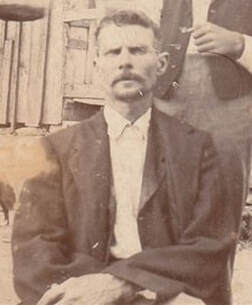 James Edward "Jim" Clark
James Edward "Jim" Clark
While, most of the Clarks moved to Parker County after the war, William Hollie Clark and James Edward “Jim” Clark stayed behind. Twenty year old Jim is listed in the 1870 U.S. census as living with his twenty four year old brother Hol Clark and Hol’s wife, Mary Ann Dobbs, and their two children at Fort Griffin in Stephens County. Hol was a stock raiser and Jim was a stock herder.
After Fort Griffin was established, a nearby settlement quickly emerged called “The Flat” or the town of “Griffin”, which sat at the bottom of the hill from Fort Griffin. It was a hub or stopping point for wagon trains, cattle drivers and buffalo hunters. Hol and Jim probably had some dealings with “The Flat” since they were cattle herders/ranchers. However, “The Flat’ eventually attracted saloons, prostitutes, gamblers, and gunfighters. It is believed to be the place where Wyatt Earp met Doc Holiday. Other notorious figures that passed through “The Flat” were Pat Garrett, Big Nose Kate, and John Wesley Hardin. The marshal of Griffin was John M. Larn and his deputy was John H. Selman, the brother-in-law of Robert Alexander “Elic” Clark. However, Larn and Selman proved to be working both sides of the law. The lawlessness got so bad in the flat that it was labeled “Babylon on the Brazos”. And in 1874 it was placed under the fort’s control and martial law was declared, thus, driving out the undesirables. “The Flat” flourished again for a time. But the Fort was eventually closed in 1881 as buffalo dwindled and the Indians were pushed out of the area and onto reservations. The soldiers were no longer needed. It wasn’t long before The Flat became a ghost town.
After Fort Griffin was established, a nearby settlement quickly emerged called “The Flat” or the town of “Griffin”, which sat at the bottom of the hill from Fort Griffin. It was a hub or stopping point for wagon trains, cattle drivers and buffalo hunters. Hol and Jim probably had some dealings with “The Flat” since they were cattle herders/ranchers. However, “The Flat’ eventually attracted saloons, prostitutes, gamblers, and gunfighters. It is believed to be the place where Wyatt Earp met Doc Holiday. Other notorious figures that passed through “The Flat” were Pat Garrett, Big Nose Kate, and John Wesley Hardin. The marshal of Griffin was John M. Larn and his deputy was John H. Selman, the brother-in-law of Robert Alexander “Elic” Clark. However, Larn and Selman proved to be working both sides of the law. The lawlessness got so bad in the flat that it was labeled “Babylon on the Brazos”. And in 1874 it was placed under the fort’s control and martial law was declared, thus, driving out the undesirables. “The Flat” flourished again for a time. But the Fort was eventually closed in 1881 as buffalo dwindled and the Indians were pushed out of the area and onto reservations. The soldiers were no longer needed. It wasn’t long before The Flat became a ghost town.
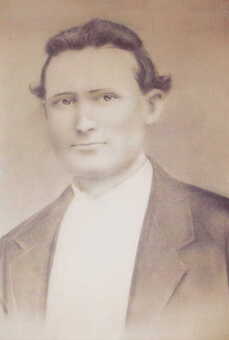 William Hollie "Hol" Clark
William Hollie "Hol" Clark
Hol Clark was in Stephens County during this time. He left Stephens County sometime between 1885 and 1888. We know this because he had a daughter, Bertha May Clark, born in Stephens County on May 2, 1885 and his son James Edward “Cud” Clark was born in Collin County on June 3, 1888. William Hollie “Hol” Clark died May 24, 1891 in Farmersville, Collin County, Texas, two months shy of his 46th birthday. He left behind a wife, Mary Ann Dobbs, and eleven children: Cynthia Jane, Theodosia Earnest, Sarah Elizabeth, Mary Ellen, Joseph Robert Lee, Lillie Francis, William Jesse, George Alexander, Bertha May, James Edward “Cud”, and Winnie Olevia. Four of those children were ten years of age or younger, and the youngest born five months after Hol’s death.
It is not known how long Jim Clark stayed in Stephens County. It appears he left before Hol. But some point after 1870 he moved to Parker County. Oral family history says that Jim married Lena Dobbs in 1879 when he was about 30 years old. Jim and Lena had a daughter in 1881. Her name was Mable and she only lived about three weeks. Lena and Mable died within 2-3 weeks of each other. It is believed that they are both buried in unmarked graves in Springtown Cemetery in Parker County.
Jim then married Eliza Ann “Anna” Dobbs on August 31, 1882 in Parker County. Anna was a cousin of Jim’s first wife, Lena Dobbs. Anna was born in 1866. She was the daughter of George Barnard Dobbs and Laura Ann Price-Dobbs. Anna’s parents came from Young County, Texas around 1866. Her father George Barnard Dobbs purchased 160 acres just north/north east of Clark Cemetery. However, by the time Anna was four years old the 1870 census shows her living with a nearby Aunt and Uncle, William M. Dobbs and wife, Nancy Ann Mitchell-Dobbs. It is assumed that Anna’s parents died sometime between 1866 and 1870 and are possibly buried in Clark Cemetery but no evidence has been found as of yet.
In 1883 Jim lost his father Robert Alexander “Elic” Clark. Elic is buried in Goshen Cemetery in Parker County next to his second wife, Ann Selman. She died 11 years after him.
It is not known how long Jim Clark stayed in Stephens County. It appears he left before Hol. But some point after 1870 he moved to Parker County. Oral family history says that Jim married Lena Dobbs in 1879 when he was about 30 years old. Jim and Lena had a daughter in 1881. Her name was Mable and she only lived about three weeks. Lena and Mable died within 2-3 weeks of each other. It is believed that they are both buried in unmarked graves in Springtown Cemetery in Parker County.
Jim then married Eliza Ann “Anna” Dobbs on August 31, 1882 in Parker County. Anna was a cousin of Jim’s first wife, Lena Dobbs. Anna was born in 1866. She was the daughter of George Barnard Dobbs and Laura Ann Price-Dobbs. Anna’s parents came from Young County, Texas around 1866. Her father George Barnard Dobbs purchased 160 acres just north/north east of Clark Cemetery. However, by the time Anna was four years old the 1870 census shows her living with a nearby Aunt and Uncle, William M. Dobbs and wife, Nancy Ann Mitchell-Dobbs. It is assumed that Anna’s parents died sometime between 1866 and 1870 and are possibly buried in Clark Cemetery but no evidence has been found as of yet.
In 1883 Jim lost his father Robert Alexander “Elic” Clark. Elic is buried in Goshen Cemetery in Parker County next to his second wife, Ann Selman. She died 11 years after him.
On July 25, 1884 Jim and Anna had their first child, William Alexander “Will” Clark. Will later married Annie Ethel Mullinax. It was in this same year that Jim and Anna donated 3 acres of the land about half a mile north of Clark Cemetery to the Godfrey Chapel Methodist Church. It was part of the land Anna had inherited from her parents. Jim’s sister, Malinda, was the wife of Albert S. Godfrey. Albert was the brother of John William Godfrey who was the minister at Godfrey’s Chapel and for whom the church was named.
Will and Ethel Clark’s second child was born in June of 1886. Her name was Mary Annie Clark. She married Thomas Walter Moughon.
In 1887 Jim and Anna designated a homestead of 382 acres, part of which Anna had inherited from her parents and part Jim had purchased in 1882 from JM Francis.
Anna was in poor health. In 1890 Jim and Anna decided to move west for her well-being. They made it all the way to Benjamin, Texas where Anna died and was buried. Her exact burial site is not known. Jim then returned to the home place adjacent to Clark Cemetery in Parker County with his two children, Will and Annie.
Will and Ethel Clark’s second child was born in June of 1886. Her name was Mary Annie Clark. She married Thomas Walter Moughon.
In 1887 Jim and Anna designated a homestead of 382 acres, part of which Anna had inherited from her parents and part Jim had purchased in 1882 from JM Francis.
Anna was in poor health. In 1890 Jim and Anna decided to move west for her well-being. They made it all the way to Benjamin, Texas where Anna died and was buried. Her exact burial site is not known. Jim then returned to the home place adjacent to Clark Cemetery in Parker County with his two children, Will and Annie.
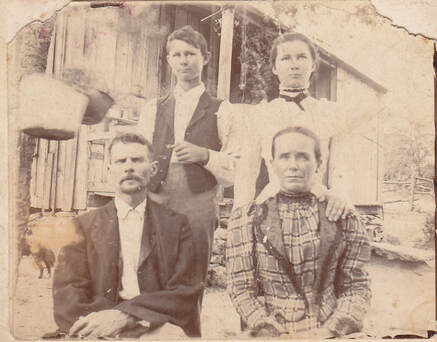 Jim Clark & Betty Clark (seated) Will and Annie Clark (standing)
Jim Clark & Betty Clark (seated) Will and Annie Clark (standing)
Jim then married his 3rd wife Margaret Elizabeth “Betty” Clendening. Betty was the sister of Kate Clendening. Kate was married to Jim’s half-brother Thomas C. Clark.
Betty was born December 1, 1856 in Tennessee. She was the daughter of Thomas B. Clendening Jr. and Sarah Jane Hutchison. Betty was a good stepmother to Will and Mary Annie.
Jim supported his family by farming. But when Jim got older he and Betty moved into the city of Weatherford on Hanover Street. He divided his land between his two children. Will continued to farm and raised his six children on the same land that he had grown up on.
In 1953 Will Clark donated part of that land to Clark Cemetery which had already been used as a burial ground for almost 100 years. A neighbor, Charles Arthur Ruland owned the land on the southern half of Clark Cemetery and so he also made a land donation to Clark Cemetery at the same time as Will, totaling a little more than 3 acres. Mary Annie had died in 1917 leaving a son and husband. Thus, her husband Tom Moughon received her part of Jim’s land.
It is believed that Jim was blind in his older years. His grandson, Odis, would often tell of how he would sit at Jim’s feet and listen to his stories of when he was a little boy. He even told Odis of his and Hol’s previously mentioned Indian encounter in Stephens County.
Betty was born December 1, 1856 in Tennessee. She was the daughter of Thomas B. Clendening Jr. and Sarah Jane Hutchison. Betty was a good stepmother to Will and Mary Annie.
Jim supported his family by farming. But when Jim got older he and Betty moved into the city of Weatherford on Hanover Street. He divided his land between his two children. Will continued to farm and raised his six children on the same land that he had grown up on.
In 1953 Will Clark donated part of that land to Clark Cemetery which had already been used as a burial ground for almost 100 years. A neighbor, Charles Arthur Ruland owned the land on the southern half of Clark Cemetery and so he also made a land donation to Clark Cemetery at the same time as Will, totaling a little more than 3 acres. Mary Annie had died in 1917 leaving a son and husband. Thus, her husband Tom Moughon received her part of Jim’s land.
It is believed that Jim was blind in his older years. His grandson, Odis, would often tell of how he would sit at Jim’s feet and listen to his stories of when he was a little boy. He even told Odis of his and Hol’s previously mentioned Indian encounter in Stephens County.
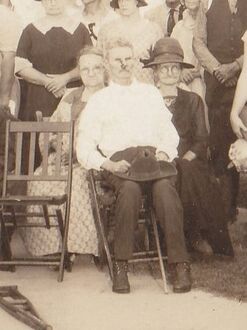 Jim Clark 1926
Jim Clark 1926
Having once lived near Goshen and donating land for the Godfrey Chapel, it is possible that Jim was a member of that church. And he is also seen in a group photo of Bethel Baptist Church. But once moving to Weatherford Jim became a member of the North Side Baptist Church. There is a group photo taken in the mid 1920’s hanging in the lobby of the church. Jim can be seen sitting in a chair in the front row holding a cane.
79 year old Jim died in 1928 after a long battle with cancer. He is buried in Clark Cemetery on land that had once been part of his farm. His wife Betty died twelve years later in 1940 and is buried next to him.
(Written by Tammy Brown, great great granddaughter of Jim Clark)
79 year old Jim died in 1928 after a long battle with cancer. He is buried in Clark Cemetery on land that had once been part of his farm. His wife Betty died twelve years later in 1940 and is buried next to him.
(Written by Tammy Brown, great great granddaughter of Jim Clark)
